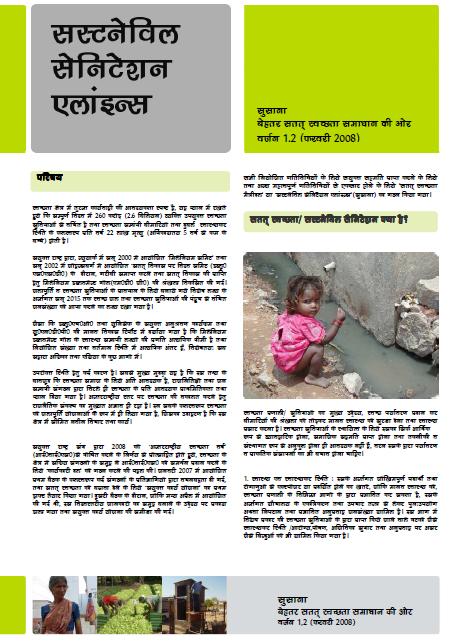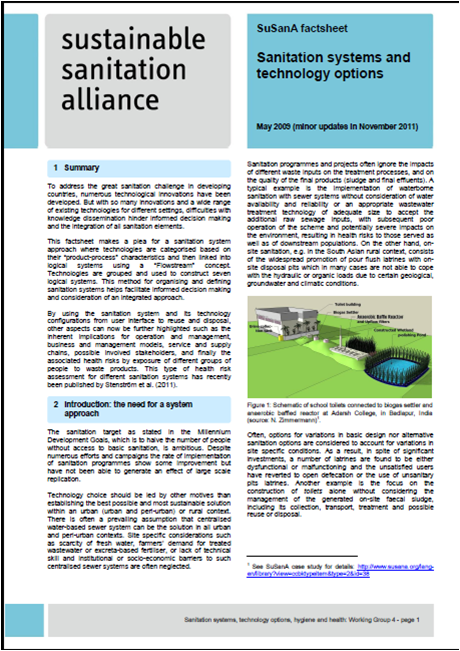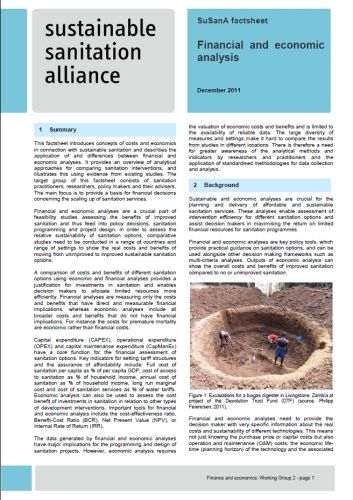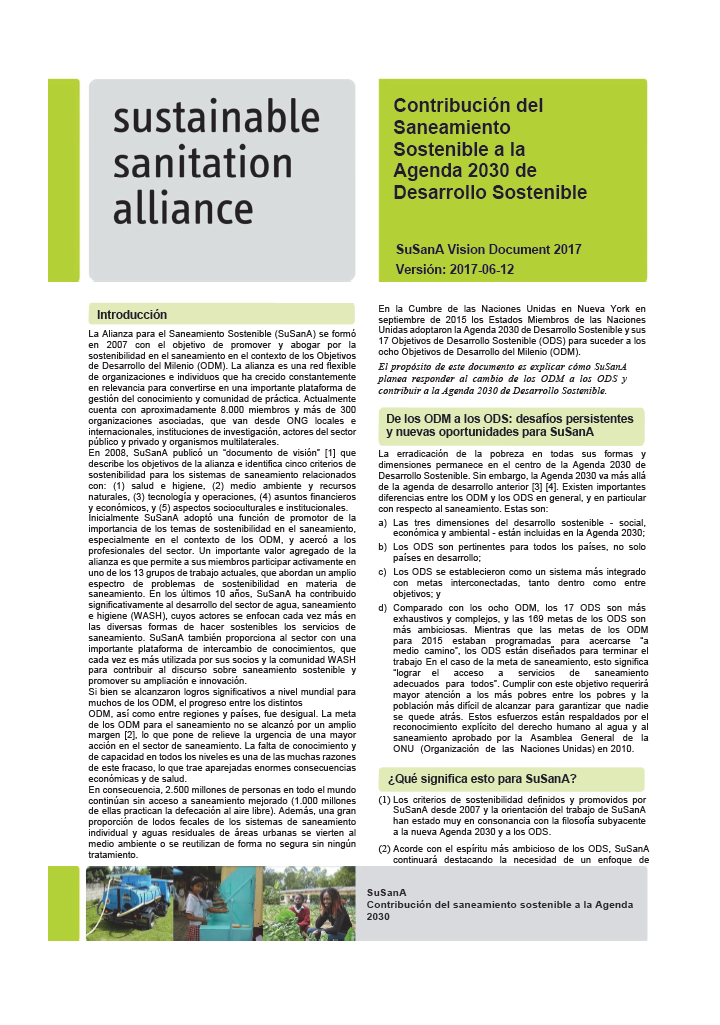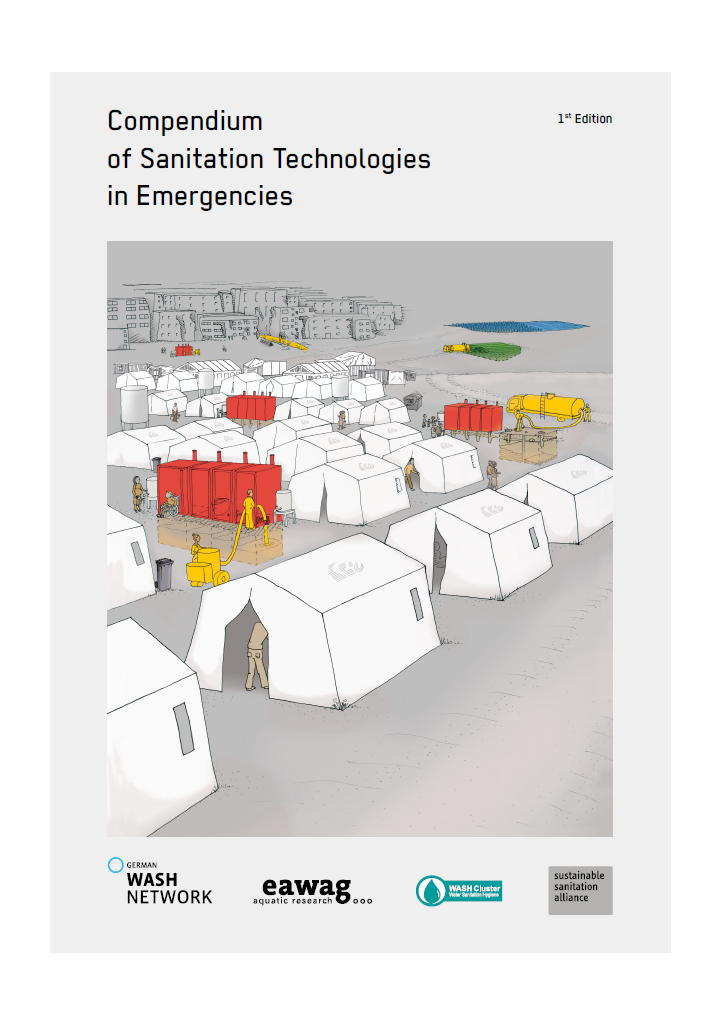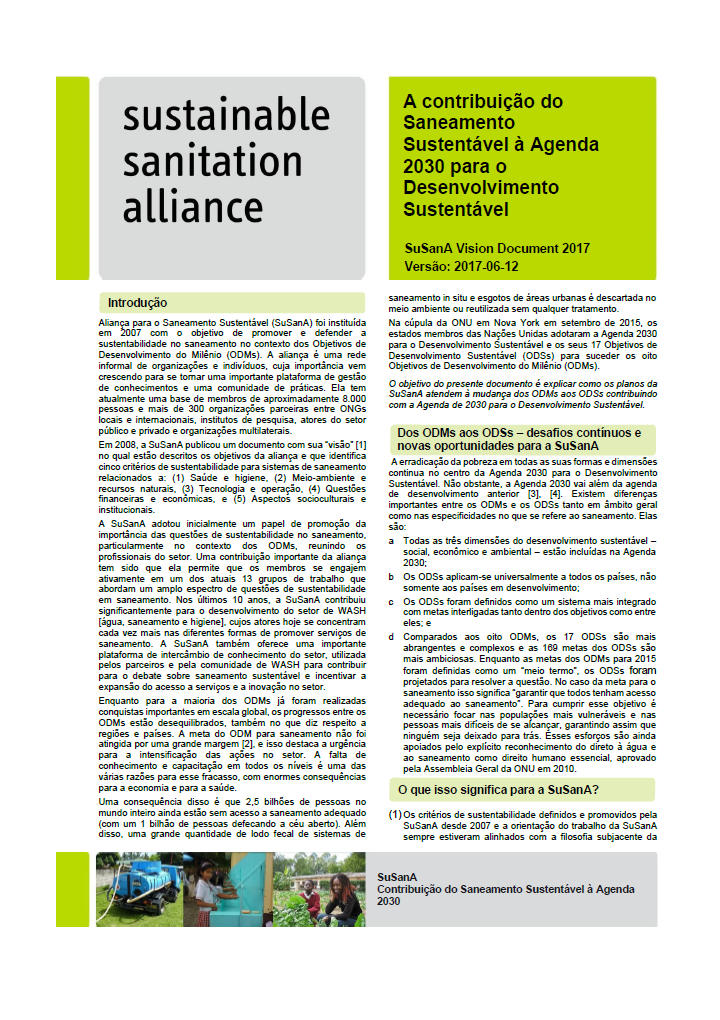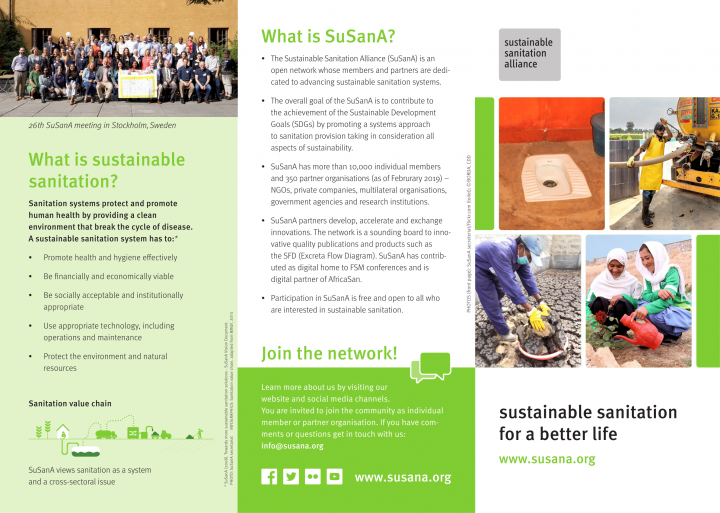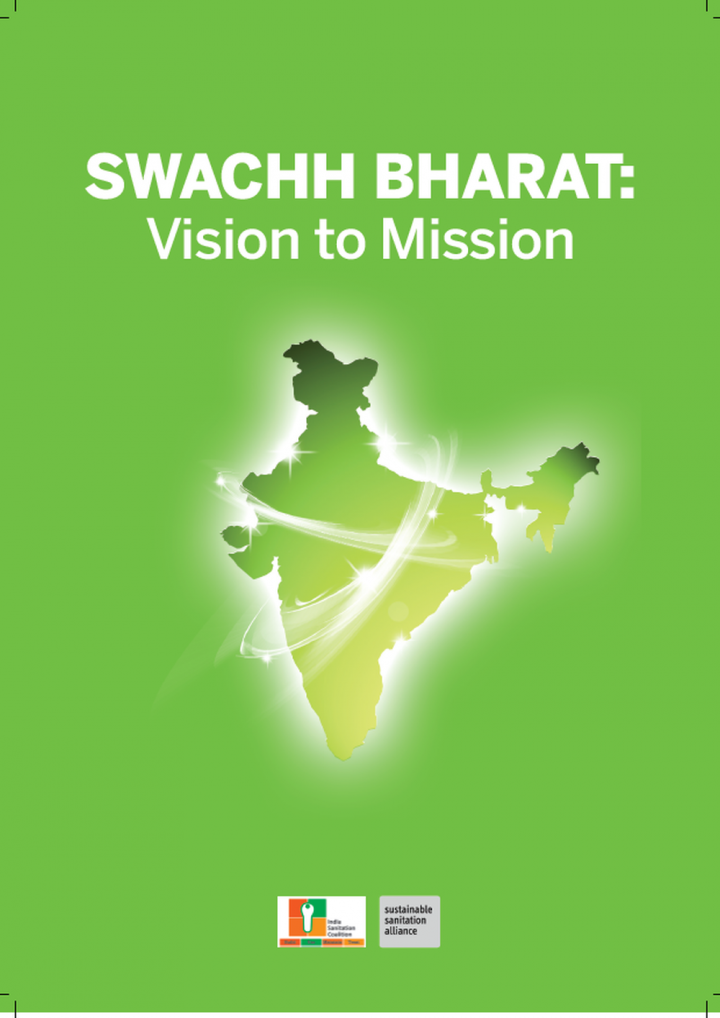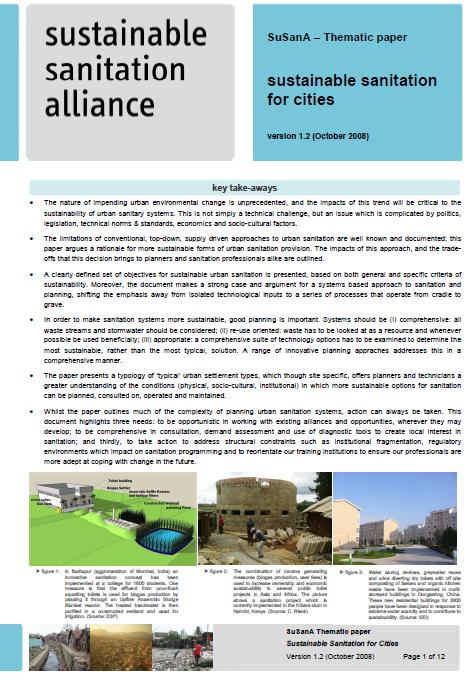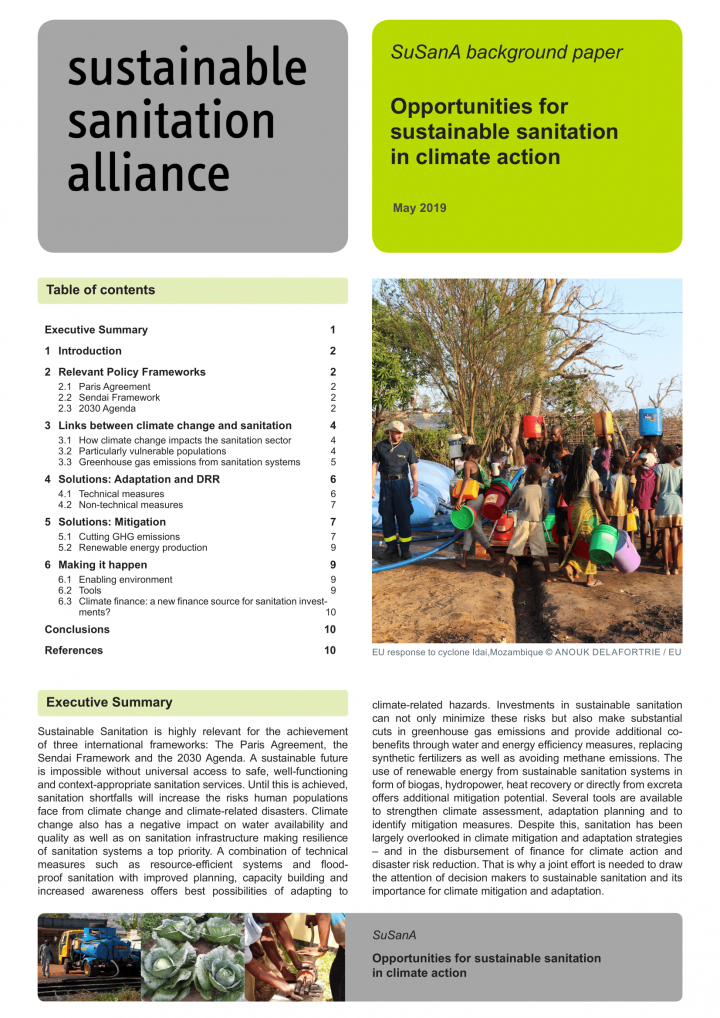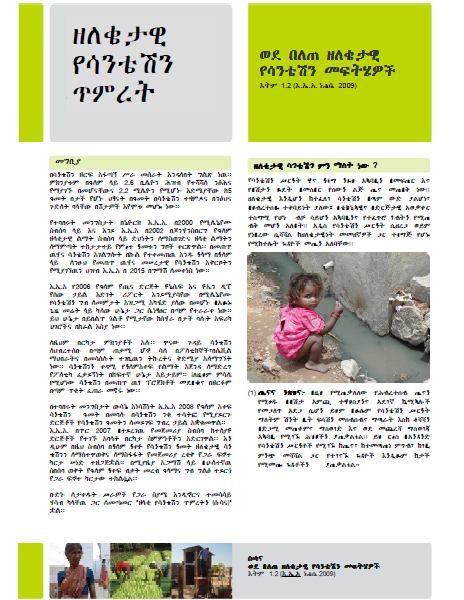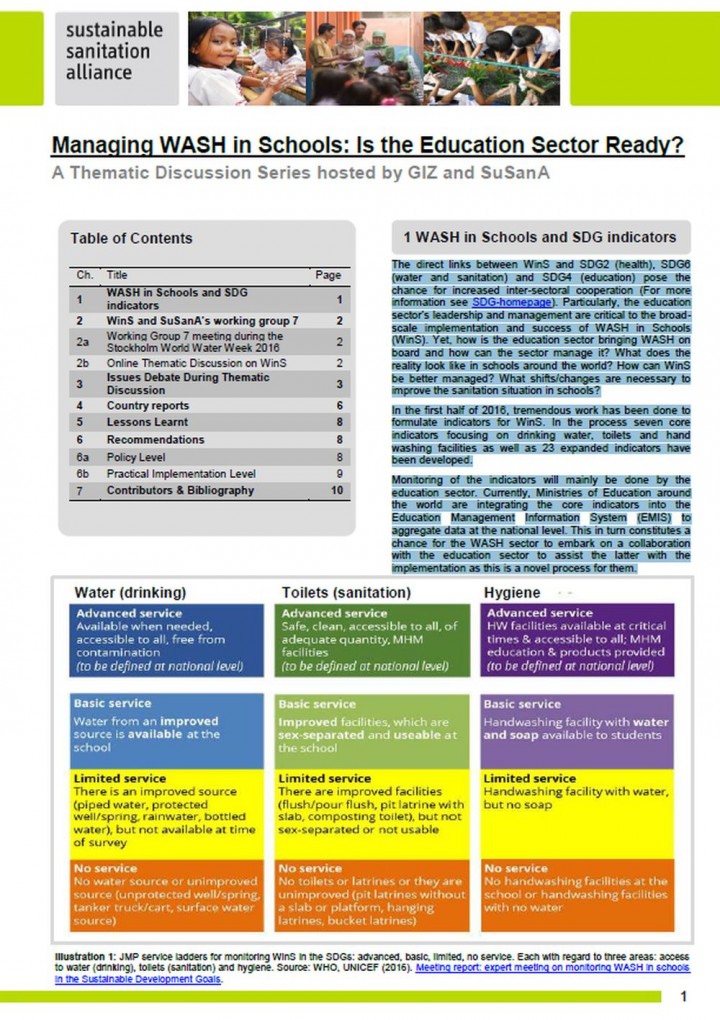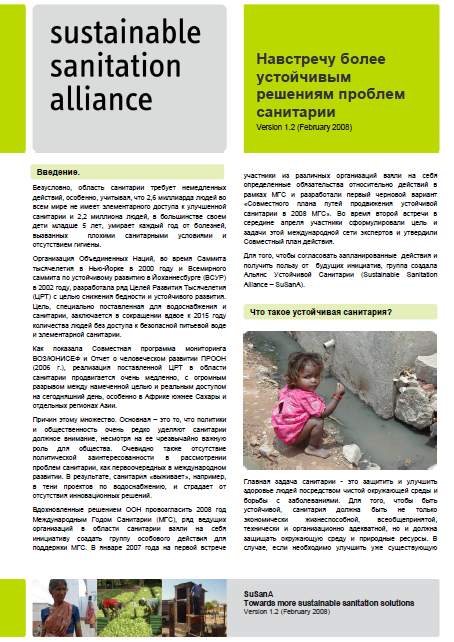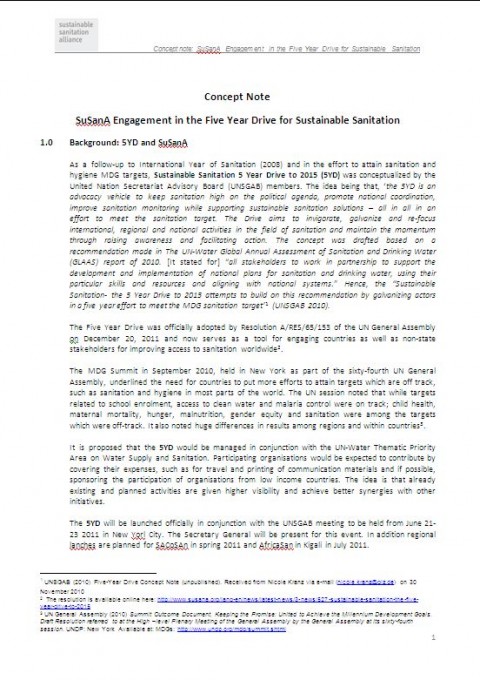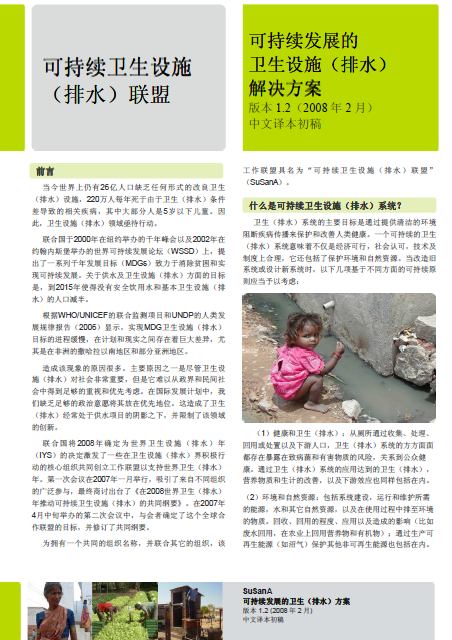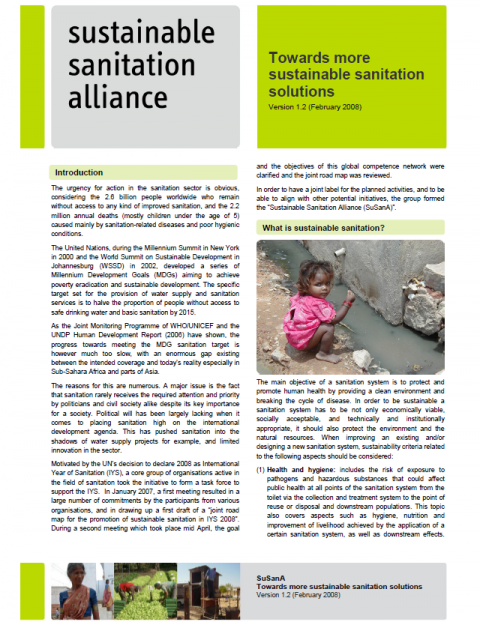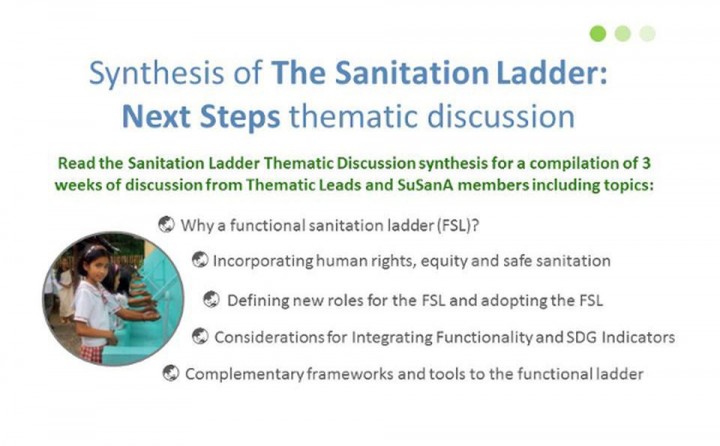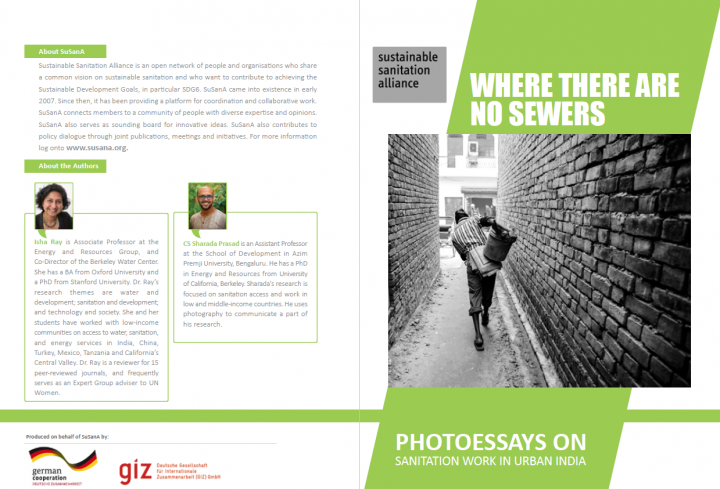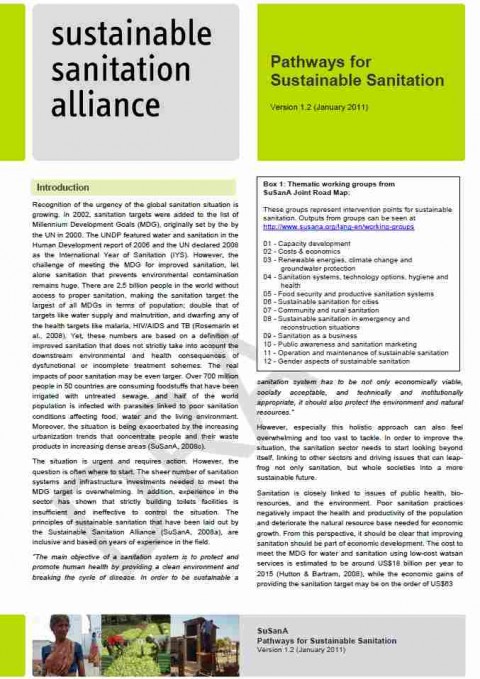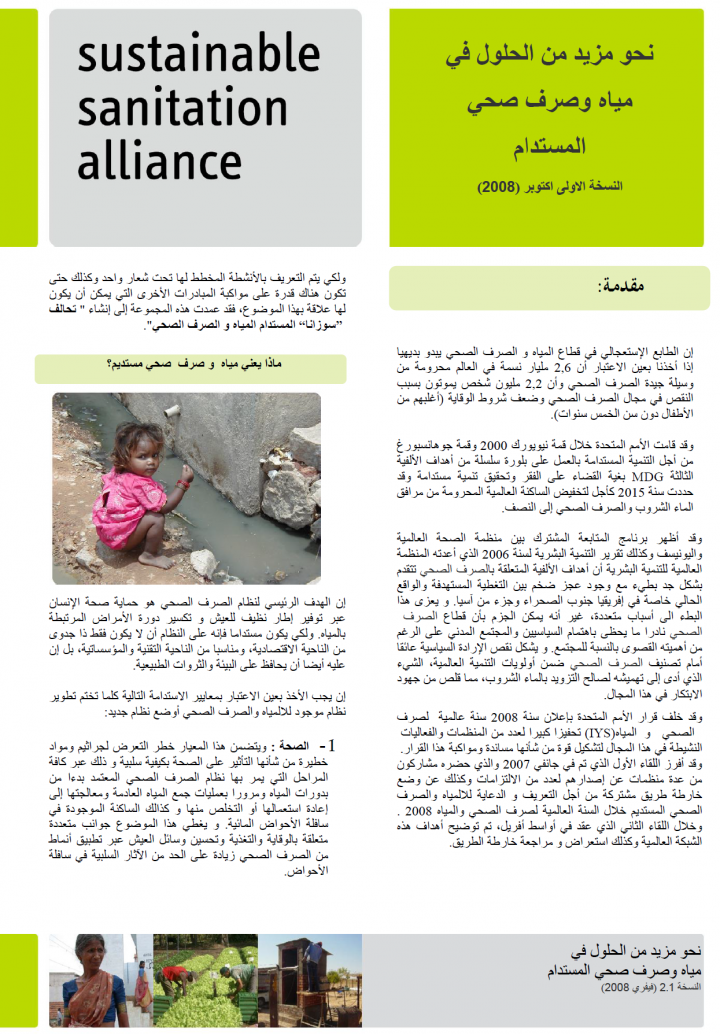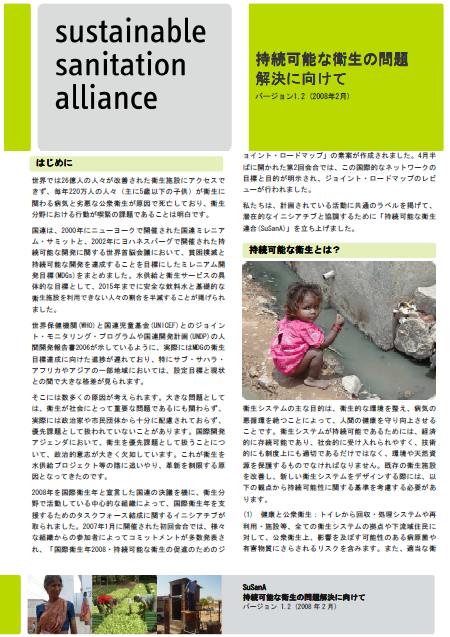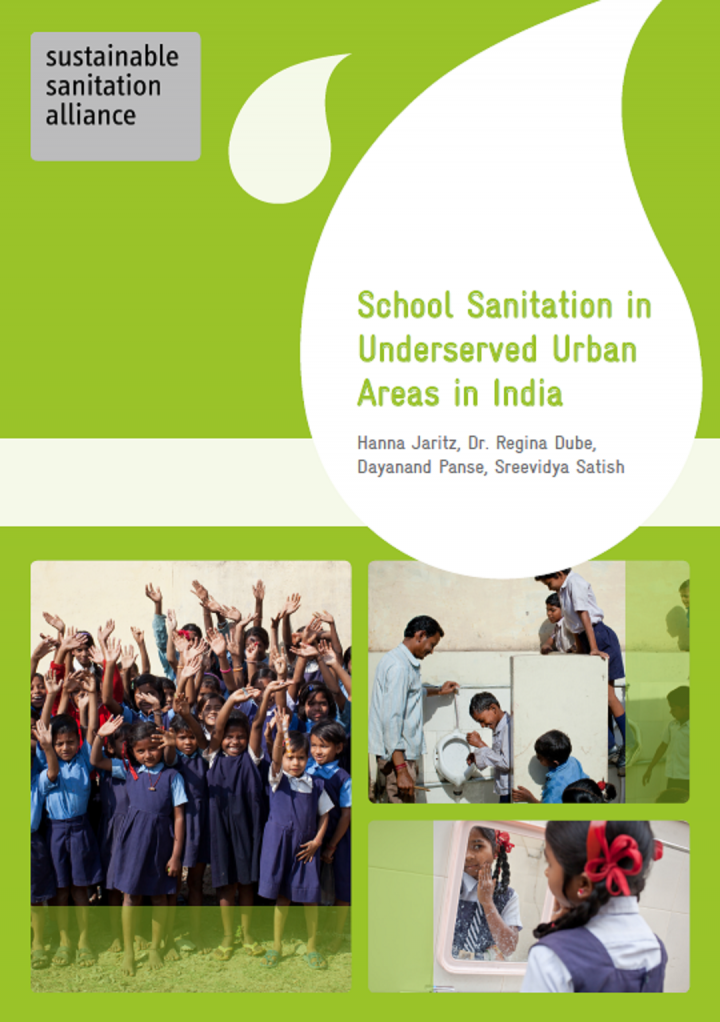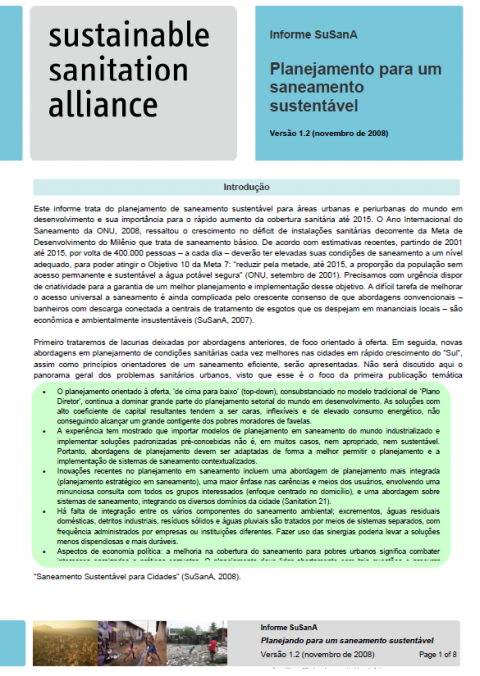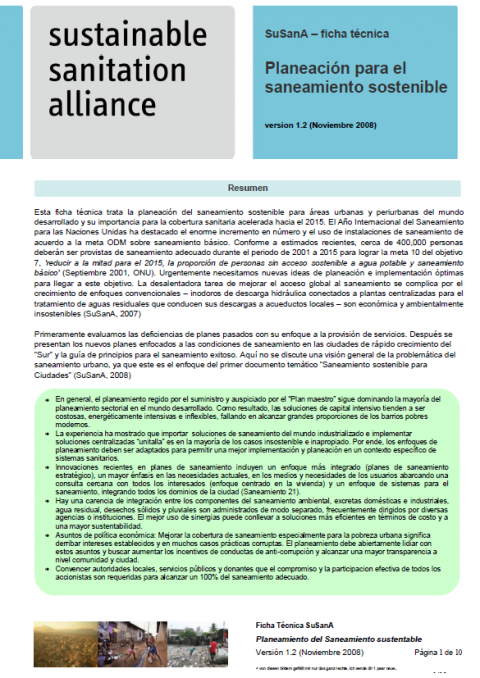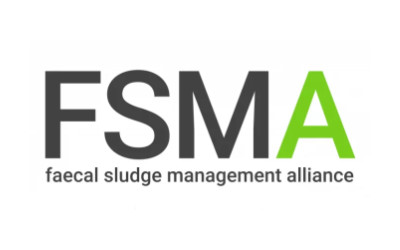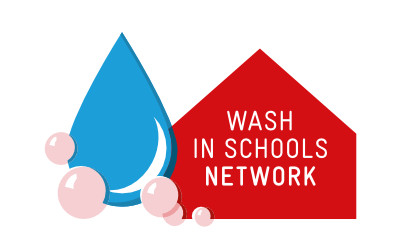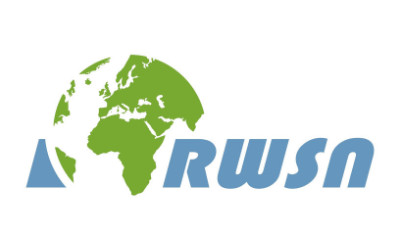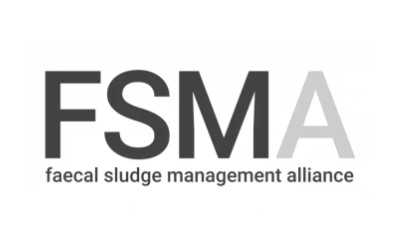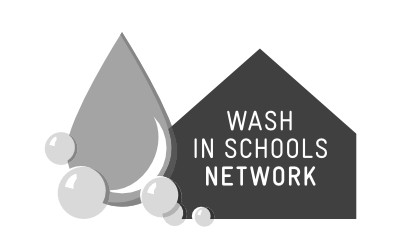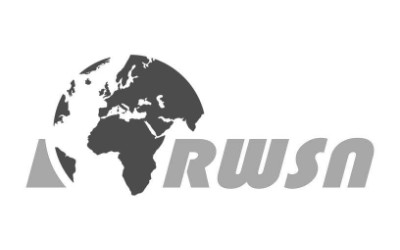Searching for information on Sanitation Workers?
The Sanitation Workers Knowledge + Learning Hub is the best source for all current news, trends, articles and updates on sanitation workers rights around the world.
Appropriate and adequate sanitation solutions are crucial for the protection of human health in emergencies. In recent years there has been an increasing number of sanitation innovations, appropriate for a variety of humanitarian contexts and a stronger sector focus on the entire sanitation service chain (from the toilet via collection and conveyance to the final treatment and safe disposal …
This flyer gives a general overview of SuSanA, its objectives, working group topics, roles, discussion forum and funding.
It needs to be printed on paper that is slightly larger than A4 so that it can be a folder in the "altar fold".
There is a 2019 version of the flyer available in English and French, and a version from 2018 in Arabic and Spanish.
The India Sanitation Coalition (ISC) and Sustainable Sanitation Alliance (SuSanA) are pleased to present this report of the Swachh Bharat Mission (SBM), two and a half years after its launch. This document captures the ideas from ISC partner experiences, as well as e-discussions on the India Chapter of the SuSanA platform. It builds on these with secondary research to present the status of SBM in …
Sustainable Sanitation is highly relevant for the achievement of three international frameworks: The Paris Agreement, the Sendai Framework and the 2030 Agenda. A sustainable future is impossible without universal access to safe, well-functioning and context-appropriate sanitation services. Until this is achieved, sanitation shortfalls will increase the risks human populations face from climate …
The direct links of WinS to SDG3 (health), SDG4 (education) and SDG6 (water and sanitation) pose the chance for increased inter-sectoral cooperation. Thereby, the education sector’s leadership and management are critical to broad-scale implementation and success of WinS. Yet, how is the education sector taking WASH on board and how can the sector manage it? How does the reality look like in …
Two roll-ups were designed:
1. The SuSanA roll-up shows information regarding working groups, regional chapters, knowledge hub, and discussion forum
2. The SuSanA partner roll-up shows all SuSanA partner logos as of February 2019
The format of the roll-ups is 85x200 cm (with extra 15cm in the green at the bottom for printing purposes). The roll-ups include a 3mm bleed.
Version 02.2019
The synthesis of the thematic discussion series "The Sanitation Ladder: Next Steps" provides a summary and the key points of the first thematic discussion series on the SuSanA Discussion Forum.
The thematic discussion addressed the role of the functional sanitation ladder in the WASH-related post-2015 landscape, where discussions and negotiations are currently taking place to determine the …
November 19 is World Toilet Day. Enormous progress has been made in the global effort to provide safe and affordable toilets for the world’s poorest citizens since World Toilet Day was first declared in 2001. Significant strides have been made in “reinventing” toilet designs for low-income, water-short, unsewered urban zones; celebrites such as Bill Gates and Matt Damon have brought this …
The overall goal of the SuSanA is to contribute to the achievement of the MDGs by promoting sanitation systems which are taking into consideration all aspects of sustainability. The MDGs and the UN’s “International Year of Sanitation 2008” are highly appreciated by the “Sustainable Sanitation Alliance” as they help push sanitation high up in the political agenda. The main focus of the …
This publication is the background article to one of the case stories in the SuSanA case story collection “Making WASH in Schools more Sustainable” (Vol II.). It has been selected as one of the focus case stories on monitoring under the umbrella of the SuSanA Working Group 7 on school sanitation.
The project "School Sanitation in Underserved Urban Areas in India" has shown that in the …

